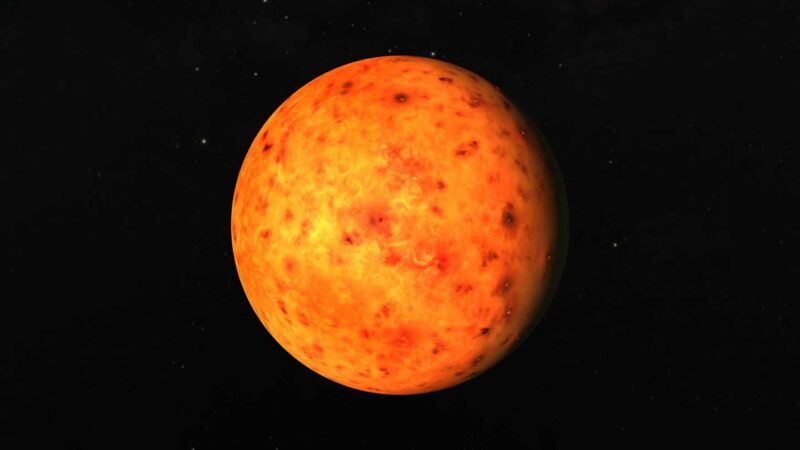
A rocky planet that circles a small star nearly 40 light-years from Earth is hot and has little or no atmosphere, a new study suggests. The finding raises questions about the possibility of atmospheres on the other orbs in the planetary system.
At the center of the system is the red dwarf star dubbed TRAPPIST-1; it hosts seven known planets with masses ranging from 0.3 to 1.4 times Earth’s, a few of which could hold liquid water (SN: 2/22/17; 3/19/18). The largest, TRAPPIST-1b, is the closest to its parent star and receives about four times the radiation Earth receives from the sun, says Thomas Greene, an astrobiologist at NASA’s Ames Research Center at Moffett Field, Calif.
Science News headlines, in your inbox
Headlines and summaries of the latest Science News articles, delivered to your email inbox every Thursday.
Thank you for signing up!
There was a problem signing you up.
Like all other planets in the system, TRAPPIST-1b is tidally locked, meaning that one side of the planet always faces the star, and one side looks away. Calculations suggest that if the stellar energy falling on TRAPPIST-1b were distributed around the planet — by an atmosphere, for example — and then reradiated equally in all directions, the planet’s surface temperature would be around 120° Celsius.
But the dayside temperature of the planet is actually around 230° C, Greene and colleagues report online March 27 in Nature. That, in turn, suggests that there’s little or no atmosphere to carry heat from the perpetually sunlit side of the planet to the dark side, the team argues.
To take TRAPPIST-1b’s temperature, Greene and his colleagues used the James Webb Space Telescope to observe the planet in a narrow band of infrared wavelengths five times in 2022. Because the observations were made just before and after the planet dodged behind its parent star, astronomers could see the fully lit face of the planet, Greene says.
The team’s results are “the first ‘deep dive’ look at this planet,” says Knicole Colon, an astrophysicist at NASA’s Goddard Space Flight Center in Greenbelt, Md, who was not involved with the study. “With every observation, we expect to learn something new,” she adds.
Astronomers have long suggested that planets around red dwarf stars might not be able to hold onto their atmospheres, largely because such stars’ frequent and high-energy flares would blast away any gaseous shroud they might have during their early years (SN: 12/20/22). Yet there are some scenarios in which such flares could heat up a planet’s surface and drive volcanism that, in turn, yields gases that could help form a new atmosphere.
“To be totally sure that this planet has no atmosphere, we need many more measurements,” says Michaël Gillon, an astrophysicist at the University of Liège in Belgium who was not part of the new study. It’s possible that when observed at a wider variety of wavelengths and from other angles, the planet could show signs of a gaseous shroud and thus possibly hints of volcanism.
Either way, says Laura Kriedberg, an astronomer at the Max Planck Institute for Astronomy in Heidelberg, Germany, who also did not participate in the study, the new result “definitely motivates detailed study of the cooler planets in the system, to see if the same is true of them.”


